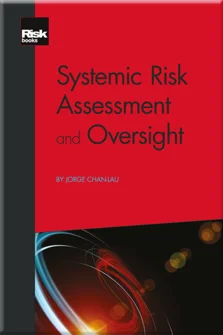Balance-sheet Network Analysis
Balance-sheet Network Analysis
Why Systemic Risk Oversight Matters
The Bottom-up Approach to Systemic Risk
Fundamental Information and Firm-level Risk
Extracting Risk Measures from Credit Derivatives and Bonds
Equity-implied Methods and Risk-neutrality Transformations
Systemic Risk Measurement: Statistical Methods
CoRisk: Quantile Regressions in Practice
Balance-sheet Network Analysis
The Portfolio-based Approach to Systemic Risk
The Regulation of Systemic Risk
Financial markets are rapidly evolving in terms of product innovation, technology adoption and geographical and sectoral integration. This rapid evolution has contributed to extensive and stronger interconnections across markets and institutions, leading to a global financial system that is robust but at the same time fragile (Haldane, 2009). On the one hand, interconnections can help to buffer the system against relatively mild shocks since they allow institutions to diversify risks across markets and counterparties. On the other hand, interconnections can amplify severe shocks and serve as spill-over conduits. The trade-off between risks to financial stability and the benefits from risk diversification depend on the magnitude of the shocks, the capitalisation level of individual financial institutions and the extent of interconnection. Benefits tend to offset the risks the better capitalised financial institutions are, and vice versa.
From a downside risk perspective, cross-market and cross-institution linkages create too-connected-to-fail (TCTF) or too-interconnected-to-fail (TITF) risk. A simple characterisation of the TCTF risk is that the failure of one institution could
Copyright Infopro Digital Limited. All rights reserved.
As outlined in our terms and conditions, https://www.infopro-digital.com/terms-and-conditions/subscriptions/ (point 2.4), printing is limited to a single copy.
If you would like to purchase additional rights please email info@risk.net
Copyright Infopro Digital Limited. All rights reserved.
You may share this content using our article tools. As outlined in our terms and conditions, https://www.infopro-digital.com/terms-and-conditions/subscriptions/ (clause 2.4), an Authorised User may only make one copy of the materials for their own personal use. You must also comply with the restrictions in clause 2.5.
If you would like to purchase additional rights please email info@risk.net










